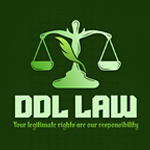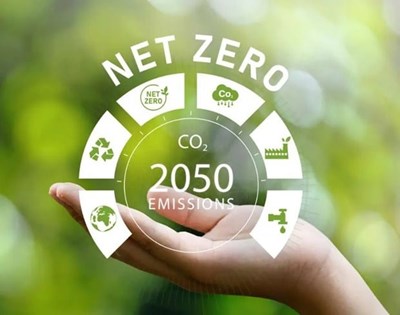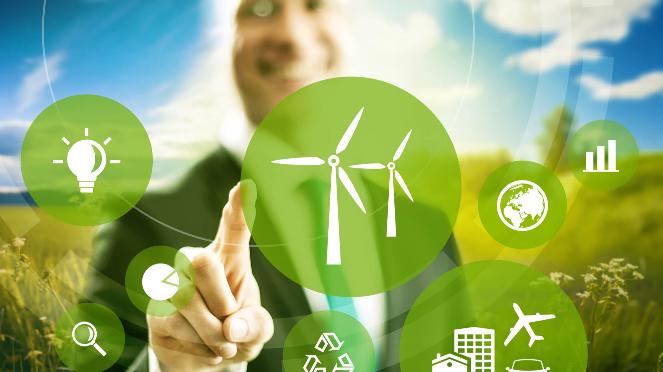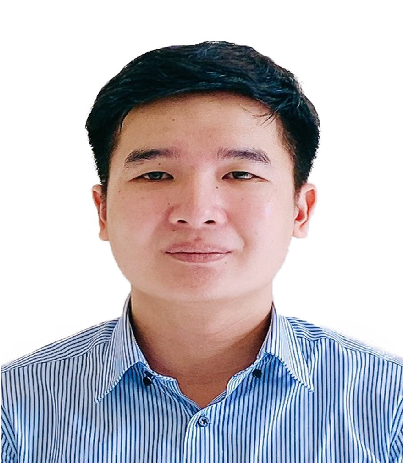POLICY AND PRACTICES OF CIRCULAR ECONOMY AND RECOMMENDATIONS FOR VIET NAM
Do Thi Dieu Linh
(This paper was officially published and contributed to the Scientific Conference "Net Zero Emissions and Sustainable Development in Vietnam and Taiwan (China)" in 2024 - NETZED 2024 - organized by the National Economics University Publishing House (NEU) in Ha Noi on October 24, 2024)
Publishing Registration Number: 3951-2024/CXBIPH/2-413/ĐHKTQD
and ISBN: 978-604-4987-08-8
Abstract
The “circular economy” plays a crucial role in fostering sustainable development by reducing resource consumption, minimizing waste and promoting recycling. This paper is conducted using methods including analysis, synthesis, comparison, quantitative research, and document research. Through this ways, the paper aims to analyze and evaluate Viet Nam’s orientation of implementing circular economy and current circular economy regulations and policies, it not only highlights the achievements, opportunities but also discovers and shows the big gap between policy and practice of circular economy which are leading to difficulties and challenges that arise from its legal framework and its process of applying circular economy into the road of economic and social development towards sustainable development. In addition, from the view of the comparative correlation between Viet Nam and Taiwan having the same original way of using natural resources and now both implementing circular economy, Taiwan, with its advanced policies and successful implementation of circular economy initiatives, offers valuable lessons for Viet Nam, which is still in the early stage of adopting this model. Finally, the paper concludes with recommendations and solutions for Viet Nam to apply and develop the circular economy efficiently, to enhance the circular economy efforts and overcome current difficulties and challenges, and proposes collaboration prospects between Viet Nam and Taiwan that could accelerate the adoption of circular economy practices in Viet Nam in the future.
Keywords: Circular economy, Plastic waste pollution, Reducing resource consumption, Sustainable development, Waste recycling
1. Introduction
Facing the context of increasingly serious environmental pollution, strongly affecting the quality of life and human development, the immediate risk of resource depletion, while the need to use natural resources for production has no tendency to decrease, a series of environmentally friendly development strategies have been born, including the circular economy model initiative.
The circular economy model is aimed at reusing materials discharged in the previous production cycle as input materials for the new production cycle, maximizing lifespan and utility of materials, contributing to minimize the need to exploit and use new natural resources. The shortcomings of the current one-way linear economy model such as waste of materials, natural resources; exhausted and not environmentally friendly exploitation; increased greenhouse gas emissions causing climate change… can be overcome by transforming economic development model to circular economy model. This model is considered an effective measure for the purpose of long-term and sustainable global development.
Europe is the birthplace of circular economy initiatives since the 1970s. Developed countries around the world were also soon aware of environmental issues, they applied circular economy model into their goals of economic development, such as Netherlands, Germany, Finland from the 2000s. Some organizations such as the Ellen MacArthur Foundation and the European Union (EU) have greatly contributed to promoting circular economy through many programs of transforming the economic model. Until 2010, circular economy officially became a central strategy in the sustainable development plans of many countries. As for the Asian region, especially the economy of Taiwan – one of the places with many achievements and experiences in applying the circular economy model in the early 2000s; Taiwan became special with an advanced waste recycling system and strict environmental policies, which helped it achieve significant progress in transforming to a circular economy model. Taiwan’s achievements will become a rich source of experience for Viet Nam in the first step of the transition.
Vietnam, learning from many countries in the world and having the same awareness of the importance and urgency of sustainable and environmentally friendly development, also participates in the path of transforming the economic model in order to revive the living environment. Since 2018, the concept of “circular economy” began to be integrated into Vietnam, then became popular when used in some policies related to environmental protection and sustainable development, although not officially used, for example, the Decision of Prime Minister No. 889/QD-TTg dated 24th June, 2020 approves the National Action Program on sustainable production and consumption for the period of 2021 – 2030; the Resolution of the Government no. 136/NQ-CP dated 25th September 2020 about sustainable development. By the end of 2020, Environmental Protection Law no. 72/2020/QH14 was officially effective, making the circular economy one of 11 environmental protection policies, also a legal document with an official definition of circular economy for Viet Nam in article 142: “Circular economy is an economic model in which activities in design, production, consumption, and service aim to reduce the exploitation of raw materials, prolong the product lifespan, limit waste generated, and minimize negative impacts on the environment”, and set goals and responsibilities for implementing circular economy for both central and local government agencies and production, business and service units. The Resolution of the 13th Congress of the Communist Party of Viet Nam 2021 also officially included circular economy as one of the criteria to guide the country’s development in the period of 2021 – 2030: “Building a green, circular and environmentally friendly economy”. Subsequently, the Decree of the Government no. 08/2022/NĐ-CP dated 10th January 2022 detailing a number of articles of the Environmental Protection Law, the Decision of the Prime Minister no. 687/QD-TTg dated 7th June 2022 approving the Circular Economy Development Project in Viet Nam was successively issued and brought the concept of circular economy deeper into Viet Nam’s practice. Most recently, based on the spirit of Decision No. 687, the Ministry of Planning and Investment launched a draft decree on the circular economy development pilot mechanism, which is still in the second phase of consultation in 2023.
It can be said that Vietnam, on the path of transforming into a circular economy, is urgently perfecting the legal framework for the circular economy model to deploy synchronously and uniformly nationwide towards the goal of sustainable development by 2050. From there, the writer clearly assesses the importance and urgency of in-depth research to contribute to the development of a legal framework and policies on the circular economy, creating advanced conditions for promoting the development of this model in Vietnam, which is also the main goal of this paper. At a more macro level, this paper also contributes to analyzing prospective areas that can call for cooperation in developing a circular economy between Vietnam and Taiwan.
2. Theoretical framework and Literature review
2.1 Theoretical framework
Circular economy is developed based on many different theoretical foundations and doctrines, in which the main important theories include:
First, the theory of Industrial Ecology: This is one of the fundamental foundations, proposed since the late 1980s by researchers, typically Robert Frosch and Nicholas Gallopoulos. The term "industrial ecology" was introduced by the two in their research article on "Strategies for Manufacturing", Scientific American 261, September 1989. In natural ecosystems, the concept of "waste" does not exist, the flows of matter and energy move and transform in a continuous cycle, the corpses and waste of one species will be the input for another. The energy source for the system to operate is entirely solar energy, over time this energy source is managed and stored in fossil forms. So, this theory emphasizes the similarities between industrial production processes and natural ecosystems. Industrial systems should function as ecosystems, in which the waste of one process becomes the input material for another process (Phuc, 2022).
Second, the theory of Ecological Economics: promoted by economists, notably Nicholas Georgescu-Roegen – he was the first economist to put forward a theory based on the premise that all of the earth's mineral resources will eventually be exhausted at some unspecified point in the future. This theory sees the economy operating within the ecological limits of the earth. Georgescu-Roegen argues that all natural resources are irreversibly degraded when used in economic activity, emphasizing that the economy cannot continue to grow without paying attention to the management of scarce and renewable resources (Cutler J. Cleveland & Matthias Ruth, 1996).
And third, the theory called “Cradle to Cradle” (or C2C): this term appeared in the book “Cradle to Cradle: Remaking the Way We Make Things” in 2002 by William McDonough and Braungart. C2C is also known as a regenerative design, simulating human industry after the processes of nature, in which materials are considered nutrients circulating in a healthy and safe metabolism, implying a move towards sustainability, balance and consideration for the future – the “cradle” of this generation will give birth to the “cradle” of the next generation. This theory is considered the direct basis of the circular economy, a comprehensive economic, industrial and social framework that aims to create systems that are not only efficient but also fundamentally waste-free (Rio News, 2024).
2.2 Literature review
Developing a circular economy in Viet Nam is one of the topics that attracts the attention of many experts, scholars, and researchers. A review of the domestic research situation on this content is as follows:
Bui Quang Trung, Pham Huu Nam (2020), Some solutions to promote the development of circular economy in Viet Nam, this paper gets an overview of opportunities for circular economic development in Viet Nam and the current status of policies, awareness and resources for circular economic development, thereby proposes general solutions like improving legal framework, increasing resources and adjusting energy planning.
Le Thanh Hai (2021), Orientation of circular economic development in the Vietnamese legal system, this paper focuses on analyzing the concept of circular economy and Viet Nam’s approach to circular economy through the Communist Party’s policies and related regulations.
Tran Van Hieu (2022), Circular economy – Strategy and Solutions for sustainable development of the Mekong Delta, this paper focuses in depth on the benefits of circular economy and analyses circular economy models in the Mekong Delta region, thereby proposes some solutions to raise awareness and incentive policies for business based on the feature of Mekong Delta region.
Phan Thi Ai, Tran Nu Hong Dung (2023), The issue of developing circular economy in Viet Nam, the paper focuses on analyzing circular economic models in Viet Nam, then points out the current status of laws and general awareness, thereby proposes general solutions on circular economic media method, laws improvement and development of related science and technology.
Vu Thi Uyen, Nguyen Phuong Mai (2023), Circular economic development models in the world and lessons for circular economic development in Viet Nam, this paper focuses on analyzing some typical circular economic models of the EU and Singapore, draws out the current situation of Viet Nam related to legal policies, human resources, and then proposes some solutions as perfecting the legal corridor, developing science and technology and adjusting energy planning.
Tran Linh Huan, Le Thi Chau Giang, Pham Thi Hong Tam (2024), Circular economic development in Viet Nam: Current situation and Recommendations for improvement, this paper assesses the importance of circular economy and outlines the current situation of circular economic development in Viet Nam, mostly emphasizes the general situation then proposes general contributions to the guiding and regulatory role of the Government and legal system, and general awareness of Vietnamese people.
Hoang Quoc Lam, Ngo Xuan Hoa (2024), Policies, Laws and Solutions for developing circular economy in Viet Nam, this paper provides a summary of orientation of Viet Nam’s circular economy development project, general assessment of advantages and disadvantages of related legal policies, thereby proposes general solutions as institutionalizing legal regulations and promoting human resources.
Huynh Van Khai (2024), Experience in developing circular economy in some countries in the world and its connection with Viet Nam, the paper focuses on analyzing experience in developing circular economy in China, Sweden, and France, then determines the current situation of Viet Nam in terms of laws, awareness and responsibility of enterprises, thereby proposes solutions on the role of the Government and people’s awareness.
Generally, existing studies point out the limitations of the law on the development of the circular economy, but do not specifically point out what the difficulties are, where they come from, while the gap between the orientation and legal regulations and practice is quite large - which will be pointed out in this paper. In addition, learning from the experiences of previous countries is also mentioned, however, Taiwan's successful circular economic models have not been mentioned and effectively exploited to become a great source of experience for Viet Nam, which will be analyzed in this paper.
3. Methods
The methods used include: analysis, synthesis, comparison, quantitative research, document research. In which, quantitative research, document research methods are used to synthesize available data from previous surveys, reports, databases to clarify the current status of recycling, waste treatment, resource use and trends of the circular economy; synthesis and analysis methods are used to synthesize theories as a basis for research on the circular economy, analyze current policies, regulations and the current status of the circular economy, thereby helping readers understand the relationship between these factors, and at the same time draw conclusions and solutions to the entire problem; comparative method is used to see the similarities and differences in the current state of the circular economy and the policies and methods applied in Viet Nam and Taiwan as well as other countries, thereby proposing appropriate recommendations to draw experience for Viet Nam.
4. Results
4.1 Viet Nam’s achievements in applying circular economy
Although only in recent years has it officially begun to use the term “circular economy”, a system of policies to promote minimizing waste of resources and recycling waste has been applied by Viet Nam many years ago, since the Earth Summit 1992. Proud to be the first country in the ASEAN region to start making circular economy a strategic policy in environmental protection and sustainable development, Viet Nam in recent years has got certain achievements in putting the circular economy model into practice:
The detailed implementation of the State’s guidelines and policies
Viet Nam has made specific efforts through the approval of many projects and programs that directly target the issue of waste recycling, especially plastic waste, which contributes to bringing circular economy gradually into practice in production and business. In October 2018, the 8th Conference of the 12th Party Central Committee issued the Resolution no. 36-NQ/TW on the strategy for sustainable development of Viet Nam’s marine economy until 2030, with a vision to 2045; the National strategy on integrated solid waste management to 2025, with a vision to 2050 was also published through the Decision of the Prime Minister no. 491/QĐ-TTg. In December 2019, the Prime Minister issued the Decision no. 1746/QĐ-TTg on the National action plan on ocean plastic waste management by 2030, set the goals that by 2030, Viet Nam will reduce 75% of marine plastic waste, collect 100% of lost or discarded fishing gear, completely eliminate the use of disposable plastic products, periodically collect and clean beaches, and periodically monitor the status of plastic waste. The cleaner production program in industry by 2020 has also been widely implemented in many small-and-medium-sized enterprises to increase the efficiency of resource use and reduce waste emissions; statistics over 12 years of implementing this strategy in industry show that up to now 68,5% of enterprises have recognized the benefits of applying cleaner production – an increase of 20,5% compared to 2010, 46% of production units have applied the cleaner production – an increase of 35,9% compared to 2010, 12% of which have achieved savings of up to 8% or more in reducing energy and raw materials per unit of product (The Communist Party of Viet Nam, 2024). In 2020, the Prime Minister continued to issue the Directive no. 33/CT-TTg on strengthening the management, reuse, recycling, treatment and reduction of plastic waste; the official action of legalizing the concept of circular economy into the Environmental Protection Law 2020 at the same time is considered a great achievement that contributes significantly to strengthening waste management and recycling, minimizing resource waste, promoting businesses and communities to switch to a more sustainable production model, typically in the way of promoting recycling and reuse of resources, especially in collecting and recycling scrap iron, paper and cleaner production in small and medium enterprises, then contributes to environmental protection and promotes the development of a green, efficient and circular economy. In 2021, the Prime Minister continued to issue successively Decision No. 175/QD-TTg in February, approving the Project of promoting propaganda on waste prevention and control for the period 2021 – 2025, and Decision No. 1316/QD-TTg in July approving the Project of strengthening plastic waste management in Viet Nam. In 2022, the promulgation of the Decree no. 08/2022/ND-CP also contributed to concretizing the waste management system according to each stage of classification, collection, transportation, recycling, and treatment, making the design and building of a circular economic system thorough from production to consumption and recycling; clarified the extended producer responsibility (EPR) for the collection and recycling of products after us, contributing to raising businesses’s awareness and obligations of the development of the country’s circular economy. The detailed implementation of the State’s policies and guidelines on circular economy through setting specific goals is an important step in laying the foundation for the realization of the circular economy in Viet Nam.
The first step of evaluating and identifying Viet Nam’s position on the path of transforming to circular economy
The Ministry of Natural Resources and Environment, in cooperation with the World Bank, has conducted research to survey the current situation of plastic waste pollution and the potential of plastic substitutes. This research contributes to providing evidence and reliable data for Viet Nam to develop policies and investment portfolios to address the problem of plastic waste. With the support and cooperation of the Pro Blue Trust Fund, a plastic pollution survey was conducted to collect data on the quantity, types and locations of plastic waste dumped into rivers and seas, also to identify the 10 most common types of plastic waste leaked into the environment. From July 2020 to January 2021, the GreenHub Center for Green Development Support collected and analyzed data in riverbank and coastal areas in 10 provinces and cities in Viet Nam (The World Bank, 2022). For the first time, Viet Nam has a representative baseline data set of beach and riverside areas on plastic waste pollution. It is an important basis for building the next comprehensive database for designing, implementing and monitoring effective intervention solutions, which helps Viet Nam determine its position on the path of transition to a circular economy model with a long-term vision towards sustainable development goals.
The realization of the circular economy model
“Garden – Pond – Barn” is one of the first models classified as economic circulation that has been applied for a long time in Viet Nam. Over time, with the gradual and official popularity of the circular economy concept, some of large enterprises in Viet Nam have caught up and built their own circular economy models, typically the pangasius farming model of Vinh Hoan Company in Cao Lanh – Dong Thap, they can control from breeding – farming – harvesting – processing – production – marketing – sales, and do not discard any part of the pangasius, including things that were previously considered waste such as skin, fat, interal organs, waste water are also turned into resources for irrigation of fruit trees, rice, dead fish and sludge into organic fertilizer, discarded packaging is used as raw material for waste treatment plants – fertilizer production; similar to the banana – cow and fish farm model of farmer Vo Quan Huy in Long An, the “rice, shrimp”, “rice, fish” models in Bac Lieu, Soc Trang, Ca Mau (Hieu, 2022); or Viet Nam Dairy Products Joint Stock Company (Vinamilk) is also considered a leading enterprise in applying circular economy, manure at the cow farm is treated in Biogas pond to generate renewable energy used for milk pasteurization for calves, boiling water for daily use, drying towels, clothes, hay…, while waste is treated into fertilizer for pastures, corn, serving soil improvement, they also improve the design of pallet shrink wrap film to help reduce nearly 30,000 kg of plastic in 2022 (Viet Nam Dairy Products Joint Stock Company, 2022).
4.2 Viet Nam’s difficulties and challenges in applying circular economy
Beside the initial achievements, a country that has just taken its first steps on the path of a circular economy can not avoid difficulties and challenges in both practical situations and legal regulations.
The consumption of resources, energy
Viet Nam has become a net importer of energy, including coal and oil. It is forecasted that by 2030, Viet Nam will have to import about 100 million tons of coal per year. This not only has a negative impact on the environment but also increases production costs and reduces the competitiveness of businesses (Ai & Dung, 2023).
The alarming pollution situation
Viet Nam is among the countries with alarmingly high amounts of plastic waste. Viet Nam is facing to many risks from plastic waste, as the amount of plastic waste is increasing rapidly, from about 1,8 million tons per year in 2014, to 2,0 million tons per year in 2016 and currently about 3,27 million tons per year are discharged into the environment. The amount of plastic waste discharged into the ocean each year is up to 0,28 – 0,73 million tons per year (accounting for nearly 6% of the total amount of plastic waste discharged into the ocean of the world), but it is worth noting that only 27% of it is recycled and utilized by facilities and businesses. The treatment and recycling of plastic waste is still limited when up to 90% of plastic waste is treated by burying, filling, burning and only the remainging 10% is recycled (Hung, 2022). According to the Plastic Pollution Diagnosis Report identifying sources and pathways of plastic pollution in Viet Nam, plastic waste accounts for the majority of waste found along rivers and coastal areas. Of all types of plastic waste leaked into the environment, single-use plastic waste is the most common, plastic bags and their fragments are found the most, abandoned fishing gear is second, the 10 most common types of plastic found along rivers account for 81% of the quantity, and coastal areas account for 84% of the total amount of plastic waste leaked into water sources, of which more than 60% are single-use plastic. According to the GreenHub Center for Green Development Support, the results of a survey of riverine and coastal waste show that plastic waste leaked into the environment accounts for 94% of the total number of plastic waste pieces and 69% of the total weight of solid waste collected (The World Bank, 2022). Survey data shows that on average each household uses about 1kg of plastic bags per month, the amount of plastic waste and plastic bags in Viet Nam accounts for about 8 – 12% of solid waste, but only 11 – 12% of the amount of plastic waste and plastic bags are treated and recycled, the rest is mainly buried, burned or discharged into the environment. While according to actual records from Tuoi Tre newspaper, the use of food delivery services via apps in the community is becoming more and more popular, accompanied by a sharp increase in single-use plastic waste, accordingly, with a serving of rice, noodles, pho… at least 3 – 4 types of waste are discharged such as plastic boxes, plastic bags, plastic knives and spoons depending on the type, not including disposable industrial wooden food items such as chopsticks, knives, towels… and most of them are tough bags, hard plastic that are difficult to decompose, this number is exponential with the number of thousands of food orders every day, the rate of single-use plastic waste is indeed alarming. In addition, in the total amount of domestic solid waste that is increasing in both volume and type, the collection rate of rural domestic solid waste is still low, not classified at source, the recycling rate is low and most of it is treated by burying; on average, the national rate of collection of urban domestic solid waste is about 92%, so 8% is still not collected and is discharged into the environment, not recycled. According to the results of the General Census of Rural, Agricultural and Fishery in 2011, out of 245 craft villages that emit industrial wastewater and 546 craft villages that emit solid waste, up to 60% of craft villages do not treat wastewater and 11% do not treat solid waste (Hong, 2024). Furthermore, the classification of waste at each household before taking it to the landfill is almost never done, the situation of “conveniently” throwing waste on the streets, canals, and ditches is a common behavior without any sanctions applied, which leads to difficulties in integrating the law into the lifestyle of individuals and businesses, and challenges in how to raise people’s awareness from the smallest actions that contribute to the goals of reaching circular economy and the cleanliness of the environment.
The gap between regulations, policies and practice
Firstly, although there are many policies, programs, and projects approved by the State through the ministries to specify the circular economy goals, in general, the proposed goals often encounter the problem of being unfeasible and may become “goals on paper.” Specifically, according to the proposed goal of reducing 75% of plastic waste at sea in the National Action Plan on Ocean Plastic Waste Management in 2019, there are only about 6 years left to reach the 2030 milestone, but the rate of plastic waste not collected, treated and recycled is still very high (almost 90%) and shows no signs of decreasing.
Secondly, the goal of being completely free of single-use plastics by 2030 seems to be at odds with the rapidly increasing rate of single-use plastic waste generated through food delivery apps.
Thirdly, most of the circular economy models applied in production are in large enterprises such as Vinh Hoan, Vinamilk, small-and-medium-sized manufacturing companies or spontaneous production of people seem to have no or insufficient capacity to convert – including financial and human resources reasons, moreover, the post-Covid-19 period brings heavy pressure in economic recovery for all large and small enterprises, leading to them being forced to prioritize the goal of restoring profit levels, instead of the goal of circular economy, sustainable development according to the State’s long-term strategy.
Fourthly, Viet Nam is taking its first steps on the path to a circular economy, so most of the policies that have been introduced are based on the spirit of encouragement with preferential and support mechanisms but without accompanying sanctions and without a system of standard mechanisms and specialized agencies to evaluate the application of the circular economy model in practice. For example, according to the draft Decree on applying the circular economy model testing mechanism of the Ministry of Planning and Investment, which is in the second phase of seeking comments, the Article 21 stipulates the grounds for stopping testing, including the ground at point b): “rasing risks that are assessed by relevant competent state agencies as serious, with the potential to cause major economic, social and environmental risks, irremediable technical incidents, violation of relevant legal provisions when there are effective judgments, decisions on enforcement of judgments, and decisions on administrative sanctions”, there are some shortcomings that the draft Decree has not resolved completely, such as: (i) there are no standards for establishing specialized teams to appraise circular economy projects applied by enteprises; (ii) there is no system of criteria to assess what constitutes a serious risk, with the potential to cause major economic, social and environmental risks; (iii) the circular economy is a new model compared to the current linear economy, so if we rely on the criteria of “violation declared in an effective judgment, decision on enforcement of judgments, and decision on administrative sanctions” to assess, it is inappropriate, not only wasting a lot of time but also creating legal loopholes that subjects can take advantage of for personal gain, not bringing about effective application of the circular economy.
Fifthly, on the path to gradually putting the circular economy into practice, setting up a mechanism for testing the circular economy model is the right step, setting up regulations on registration to be granted a testing license is also a correct step, although the application method set equally for both large and small-and-medium-sized enterprises creates a natural elimination mechanism in business, but if considering the long-term development plan and the practical socio-economic situation of Viet Nam, where more than 70% are small and medium enterprises, it is not really suitable for setting up a common standard in registration. This regulation has invisibly closed the gate towards the circular economy for small and medium enterprises because they do not have enough capacity to register for testing and transformation.
People’s awareness
Circular economy is a new concept for people, it poses responsibility not only for the State, Government, businesses but also for people, from the smallest actions of people also contribute to promoting the quick integration of the circular economy model, for instance, awareness of waste classification at home, not littering, limiting or not using plastic bags, disposable products. These are all the most basic tasks, but in reality, they have not been implemented in daily life without any sanctions applied, although the sanctions are fully regulated. For businesses, business owners, putting benefits first without the awareness of respecting and complying with the laws has led to many violations in illegal waste discharge, causing environmental pollution and not converting the economic model because they do not want to spend the cost of conversion. According to the General Statistics Office’s report, the number of environmental violations handled in the period of 2012 – 2021 increased more than 5,7 times, from 2.438 cases in 2012 to 14.042 cases in 2021 (Hong, 2024).
5. Discussion and conclusion
5.1 Discussion
Facing the difficulties and challenges on the path of applying circular economy, along with the goal of promoting and making circular economy a strategic policy, transforming Viet Nam’s economy into a circular one in the future, shortening the gap between legal regulations, policies and practices is an urgent action, thereby also enhancing the awareness of the entire population about the importance of circular economy. To do this, we must first base on the current socio-economic situation of Viet Nam, then learn from places with successful circular economy models, such as Taiwan – a place with a situation of using and importing up to 90% energy similar to Viet Nam, which has had certain successful steps in reducing imports and resource use, while developing circular economy.
Taiwan, which has over 20 years of experience in applying the circular economy model, with the “5+2” Strategy – with 5 industries (Asian Silicon Valley, Biomedical industry, Green energy technology, Smart machine, and National defense industry) and 2 strategies (circular economy and new agriculture), and Circular Economy Promotion Plan with 4 strategies (promote the research and development of circular technologies and material innovation and establish a special zone for this purpose, build demonstration circular parks, promote green consumption and transaction, facilitate energy and resource integration as well as industrial symbiosis) and 2 axes (circular industrialization and industrial circulation) (Circular Taiwan Network, 2024) have helped Taiwan achieve many achievements, attracted the attention of many industries to the circular economy model and gradually breaking away from the linear one, which contributes to accelerating the upgrading of 5 industries to become innovative in the short term and the transformation and redesign of all industries in the long term, then creates a circular and sustainable model, and solves the dilemma between pursuing industrial development and sustainable development starting from materials.
For Viet Nam, the importance thing in the first foundational steps is a clear orientation, the goal is not too far from reality but instead should be specific actions. I propose some recommendations based on current difficulties as follows:
The first, the State, with its leading role in development orientation, should set out the goals of circular economy projects and programs in a more realistic manner, limiting or completely eliminating “paper numbers”. To achieve this, specialized agencies should continuously conduct surveys monthly, quarterly and annually in each region and locality to accurately grasp the fluctuations of waste, plastic pollution and waste recycling. Then, there will be a basis for exactly assessing Viet Nam’s position on the circular economy path, in order to propose more appropriate policies and goals.
Second, planning and development of legal regulations and assessment standards on circular economy should be separated for large enterprises and small-and-medium-sized enterprises to ensure that everyone has the opportunity to approach and convert to a circular economy model based on their available capacity, including all stages of registration – licensing – testing – experimentation – maintenance – upgrading.
Third, learning from Taiwan’s experience, the development of eco-industrial parks, building demonstration circular parks (The Ministry of Economic Affairs, 2019), and introducing and applying the action of industrial symbiosis are some of effective measures and lessons suitable for Viet Nam. This is where recycling technologies and efficient use of resouces are concentrated, which helps to reduce waste and create a sustainable supply chain. This closed-loop platform from the experience of large enterprises in Viet Nam (Vinamilk, Vinh Hoan, etc.) should be expanded to the scope of “chains”, “regions” in the spirit that waste from the production process of this enterprise becomes a source of input materials for the production process of other enterprises in the supply chain. Industrial symbiosis activities can be implemented based on a platform system of integrated registration information, allowing enterprises to register waste – input materials, thereby matching their supply and demand of products with other similarly registered enterprise’s.
Fourth, Viet Nam needs to establish a waste management system, with strong investment in recycling technology and a waste separation system at the source – which is currently a techonological weakness in Viet Nam. This way can be learnt from Taiwan’s experiences and technologies.
Fifth, Viet Nam should set up and develop a Resource Management Strategy based on the product life cycle model, similar to the EU’s approach, to maximize resource efficiency and minimize environmental impacts in the four stages of the product life cycle: production – consumption – waste management – market for secondary raw materials, in which the extended producer responsibility (EPR) must be thoroughly applied.
Figure 1. Schematic diagram of resource management strategy
Source: Environmental Protection Agency (EPA)
Sixth, the work of promoting the circular economy to every smallest actions of people, consumers needs to be urgently focused on improving, because this is the root of the problem, incentives must go hand in hand with punitive policy to be able to improve people’s awareness in the long term. The work that needs a specific program includes: rectifying and promoting green consumption, expanding incentives for circular shopping and green recovery, maximum support for waste classification at home, high taxes on disposable plastic products, strict penalties for littering on the streets, rivers, streams, ponds, and lakes – this is one of the actions that has been left unanswered for a long time until now.
In addition, areas with high potential for cooperation between Viet Nam and Taiwan include: (1) recycling and waste management industry: sharing of technology systems and cycles; (2) green technology and cleaner production: especially textiles and plastics production, wind power and solar power, which helps Viet Nam access advanced technologies; (3) smart cities and sustainable infrastructure: this is a new field that is essential for future development that both Viet Nam and Taiwan are aiming for; (4) sustainable agriculture: reusing agricultural by-products, developing organic industry and biotechnology; (5) education and awareness raising: exchanging students, experts, organizing seminars and training programs to enhance knowledge and skills on circular economy for the workforce and the community; (6) technology transfer and investment, and (7) information technology and data management.
5.2 Conclusion
In summary, the circular economy in Viet Nam has become an important strategy towards the goal of sustainable development, environmental protection and improving the efficiency of resource use. Through legal documents, guidelines and policies, Viet Nam has taken the first solid steps in integrating the circular economy into the legal framework. However, to realize this model and make it professional, Viet Nam needs to continue to focus resources on investment to improve and enhance public awareness, develop human resources, especially promote international cooperation to learn, apply successful lessons and attract foreign investment in terms of capital, human resources and technology. The complete transition to a circular economy model will not only help Viet Nam solve environmental challenges but also create momentum for sustainable economic development in the future.
References
- Ai, P. T. & Dung, T. N. H. (2023). Van de ve phat trien kinh te tuan hoan tai Vietnam. Financial Journal.
- Circular Taiwan Network. Development of circular economy in Taiwan. Circular Taiwan Network. [Online]. Available: https://circular-taiwan.org/en/city/taiwan/.
- Cutler J. Cleveland & Matthias Ruth (1996). “When, where, and by how much do biophysical limits constrain the economic process? A survey of Nicholas Georgescu-Roegen’s contribution to ecological economics”. Elsevier Journal, No. 22 (1997), pp. 203 – 223.
- Decision No. 491/QD-TTg dated 7th May 2018 of Viet Nam Prime Minister.
- Decision No. 1746/QD-TTg dated 4th December 2019 of Viet Nam Prime Minister.
- Decision No. 889/QD-TTg dated 24th June 2020 of Viet Nam Prime Minister.
- Decision No. 175/QD-TTg dated 5th February 2021 of Viet Nam Prime Minister.
- Decision No. 1316/QD-TTg dated 22 nd July 2021 of Viet Nam Prime Minister.
- Decision No. 687/QD-TTg dated 7th June 2022 of Viet Nam Prime Minister.
- Decree No. 08/2022/ND-CP dated 10th January 2022 of Viet Nam Government.
- Directive No. 33/CT-TTg dated 20th August 2020 of Viet Nam Prime Minister.
- Draft Decree (n.d.) on the Testing Mechanism for Circular Economic Development of The Ministry of Planning and Investment.
- Hieu, T. V. (2022). “Kinh te tuan hoan – Giai phap va chien luoc phat trien ben vung o DBSCL”. Can Tho University Journal of Science, Vol. 58 Topic No. SDMD (2022), pp. 125 – 133.
- Hong, D. T. (January 2024). Tong quan so lieu thong ke moi truong Vietnam giai doan 2014 – 2021. Journal of Figures and Facts. The General Statistics Office. Ministry of Planning and Investment.
- Hung, M. (September 2022). Rac thai nhua o Vietnam: Thuc trang va giai phap. The Communist Journal.
- Law on Evironmental Protection No. 72/2020/QH14.
- Phuc, P. V. (2022). “Tiep can chuyen doi sinh thai – xa hoi ly thuyet lien nganh cho phat trien ben vung o DBSCL”. Can Tho University Journal of Science, Vol. 58 Topic No. SDMD (2022), pp. 134 – 141.
- Resolution No. 36-NQ/TW dated 22 th October 2018 of the 8th Conference of the 12th Central Committee of The Party.
- Resolution No. 136/NQ-CP dated 25th September 2020 of Viet Nam Government.
- Resolution of the 13th National Congress of the Party.
- Thanh, N. C. (2009). “Sinh thai nong nghiep – giai phap cho su phat trien ben vung”. Social Sciences Journal, No. 07 (131)-2009, pp. 28 – 32.
- The Communist Party of Viet Nam. (March 2024). Phat trien kinh te tuan hoan o Vietnam. The Communist Party of Viet Nam Electronic Newspaper. [Online]. Available: https://dangcongsan.vn/thong-tin-kinh-te/phat-trien-kinh-te-tuan-hoan-o-viet-nam-660622.html.
- The Ministry of Economic Affairs. (January, 2019). Circular Economy promotion plan. The Minisry of Economic Affrairs. [Online]. Available: https://english.ey.gov.tw/News3/9E5540D592A5FECD/8053c7c8-e0a9-4cdd-b53a-992d6330f499
- World Bank Group (July 2022). Towards a national single use plastics roadmap in Viet Nam: Strategies and Options for reducing priority single-use plastics. The World Bank.






%20edit%20size.jpeg)




 Gọi điện
Gọi điện ZALO
ZALO Chỉ đường
Chỉ đường
04 KỸ NĂNG CẦN THIẾT GEN Z NÊN CÓ TRONG THỜI ĐẠI CHUYỂN ĐỔI SỐ
HỘI THẢO KHOA HỌC: LUẬT, CÔNG LÝ VÀ PHÁT TRIỂN 2025
TRÁCH NHIỆM XÃ HỘI CỦA DOANH NGHIỆP ĐỐI VỚI NGƯỜI LAO ĐỘNG TẠI VIỆT NAM
XỬ PHẠT HÀNH VI KHÔNG PHÂN LOẠI CHẤT THẢI RẮN SINH HOẠT TỪ 01/01/2025: ĐÃ KHẢ THI?
CORPORATE SOCIAL RESPONSIBILITY (CSR) LAW IN THE CONTEXT OF INNOVATION IN VIETNAM
TRÁCH NHIỆM BỒI THƯỜNG THIỆT HẠI VÀ NGHĨA VỤ HẠN CHẾ THIỆT HẠI DO VI PHẠM HỢP ĐỒNG MUA BÁN HÀNG HOÁ
XU HƯỚNG, CƠ HỘI VÀ THÁCH THỨC VIỆC LÀM CỦA SINH VIÊN NGÀNH LUẬT TRONG THỜI KỲ CHUYỂN ĐỔI SỐ
POLICY AND PRACTICES OF CIRCULAR ECONOMY AND RECOMMENDATIONS FOR VIET NAM
LUẬT SƯ ĐỖ THỊ DIỆU LINH: HOÀN THÀNH CHƯƠNG TRÌNH THẠC SĨ LUẬT
HÀNH TRÌNH GIÁM ĐỐC THẨM - LỘI NGƯỢC DÒNG TÌM LẠI CÔNG LÝ
HỘI THẢO KHOA HỌC TĂNG TRƯỞNG XANH & VIỆC LÀM XANH 2024
HỘI THẢO QUỐC TẾ: PHÁT THẢI RÒNG BẰNG 0 & PHÁT TRIỂN BỀN VỮNG
HỘI THẢO KHOA HỌC: ĐỊNH HƯỚNG MÔI TRƯỜNG VÀ CƠ HỘI VIỆC LÀM CHO SINH VIÊN LUẬT
CHÍNH SÁCH PHÁP LUẬT VỀ ĐÀO TẠO, HỖ TRỢ, PHÁT TRIỂN NGUỒN NHÂN LỰC CHO VIỆC LÀM XANH
[ÁN LỆ-DÂN SỰ] TỔNG HỢP 72 ÁN LỆ VIỆT NAM (PHẦN 2)
[ÁN LỆ-HÀNH CHÍNH] TỔNG HỢP 72 ÁN LỆ VIỆT NAM (PHẦN 3)
[ÁN LỆ-KINH DOANH THƯƠNG MẠI] TỔNG HỢP 72 ÁN LỆ VIỆT NAM (PHẦN 5)
[ÁN LỆ-HÔN NHÂN & GIA ĐÌNH] TỔNG HỢP 72 ÁN LỆ VIỆT NAM (PHẦN 4)
[ÁN LỆ-LAO ĐỘNG] TỔNG HỢP 72 ÁN LỆ VIỆT NAM (PHẦN 6)
[ÁN LỆ-HÌNH SỰ] TỔNG HỢP 72 ÁN LỆ VIỆT NAM (PHẦN 1)
CUỘC THI AI LÀ THẨM PHÁN - KIỂM SÁT VIÊN - LUẬT SƯ GIỎI? NĂM 2022
CUỘC THI AI LÀ THẨM PHÁN - KIỂM SÁT VIÊN - LUẬT SƯ GIỎI? NĂM 2023